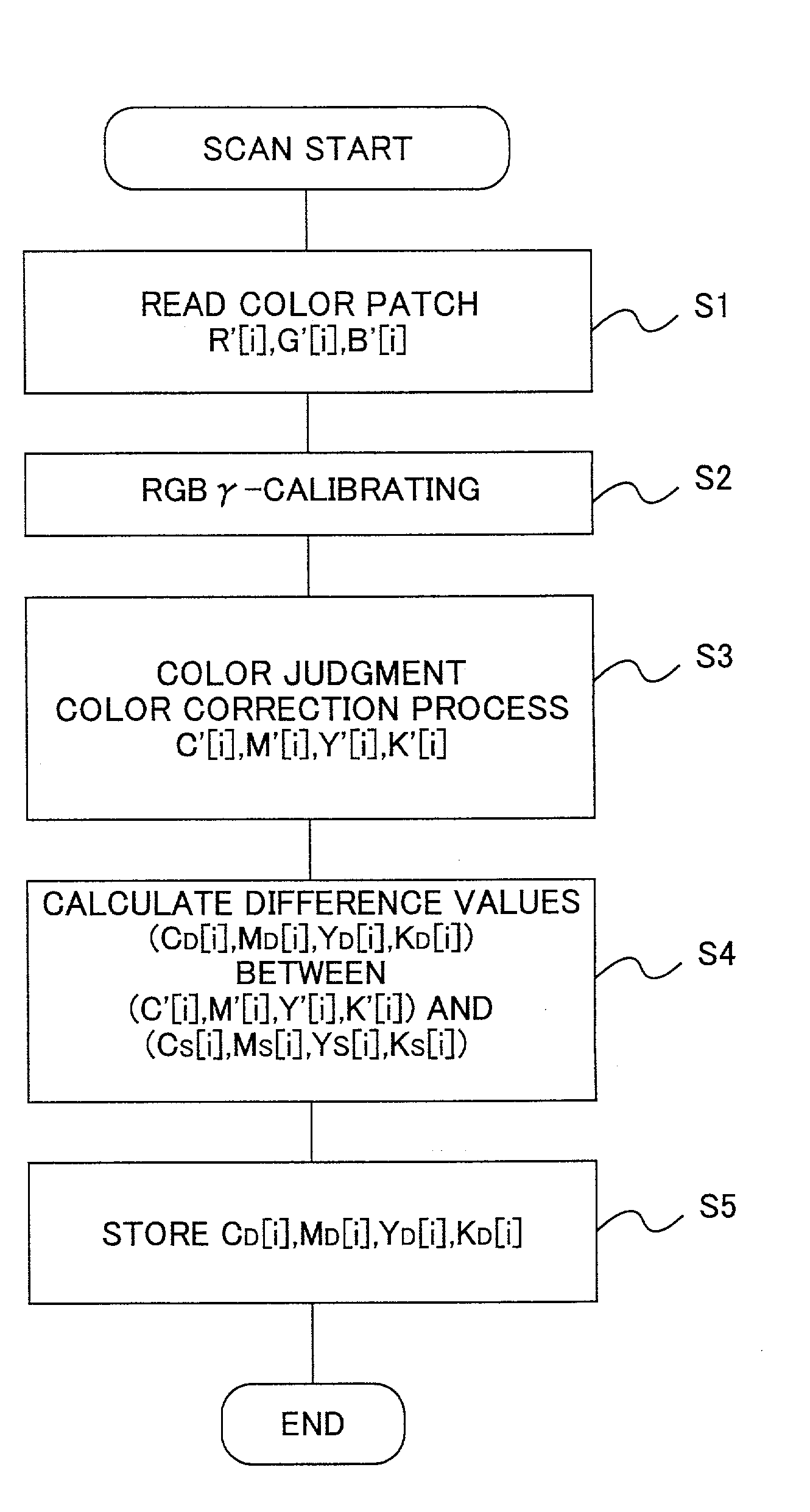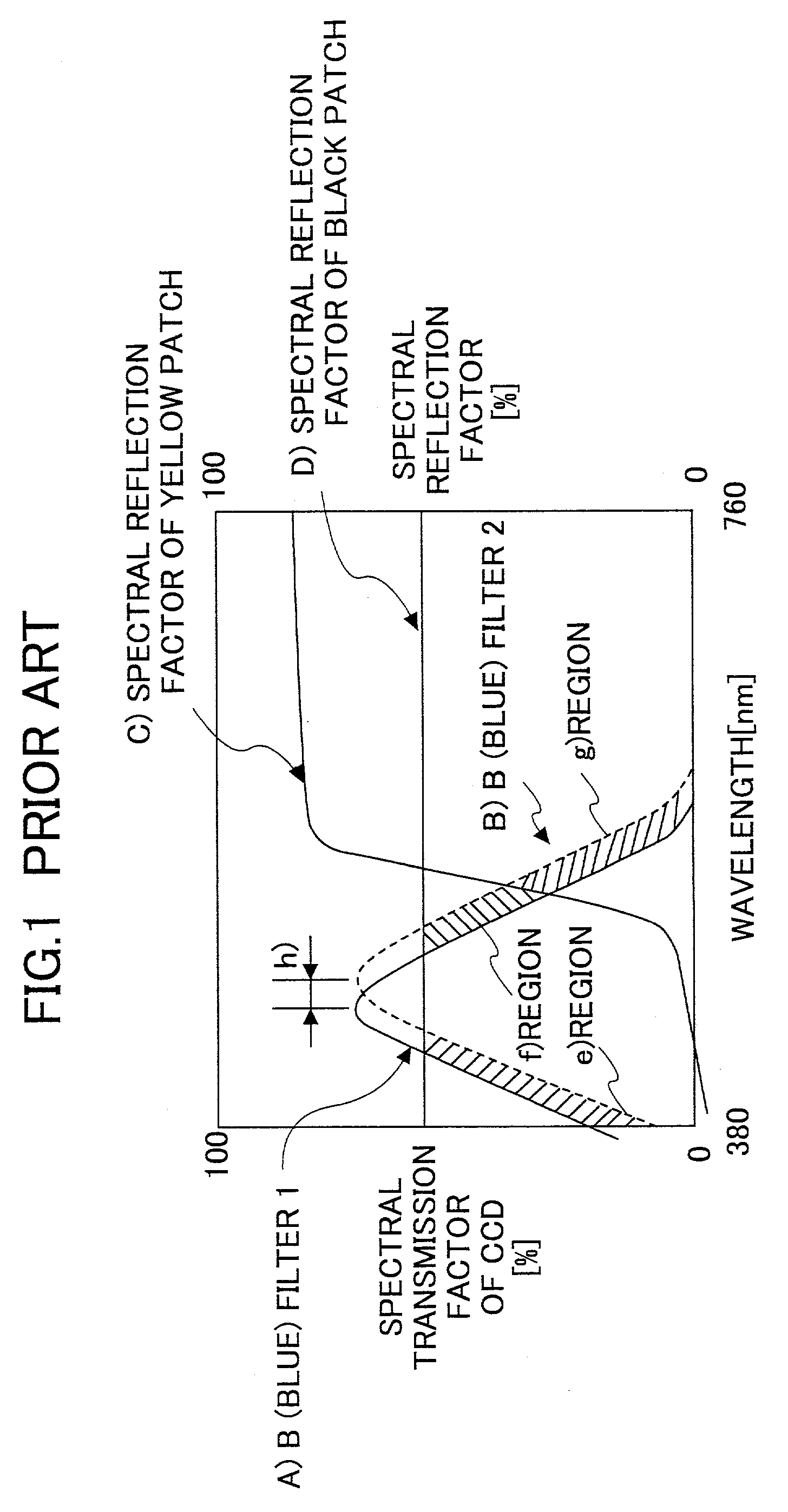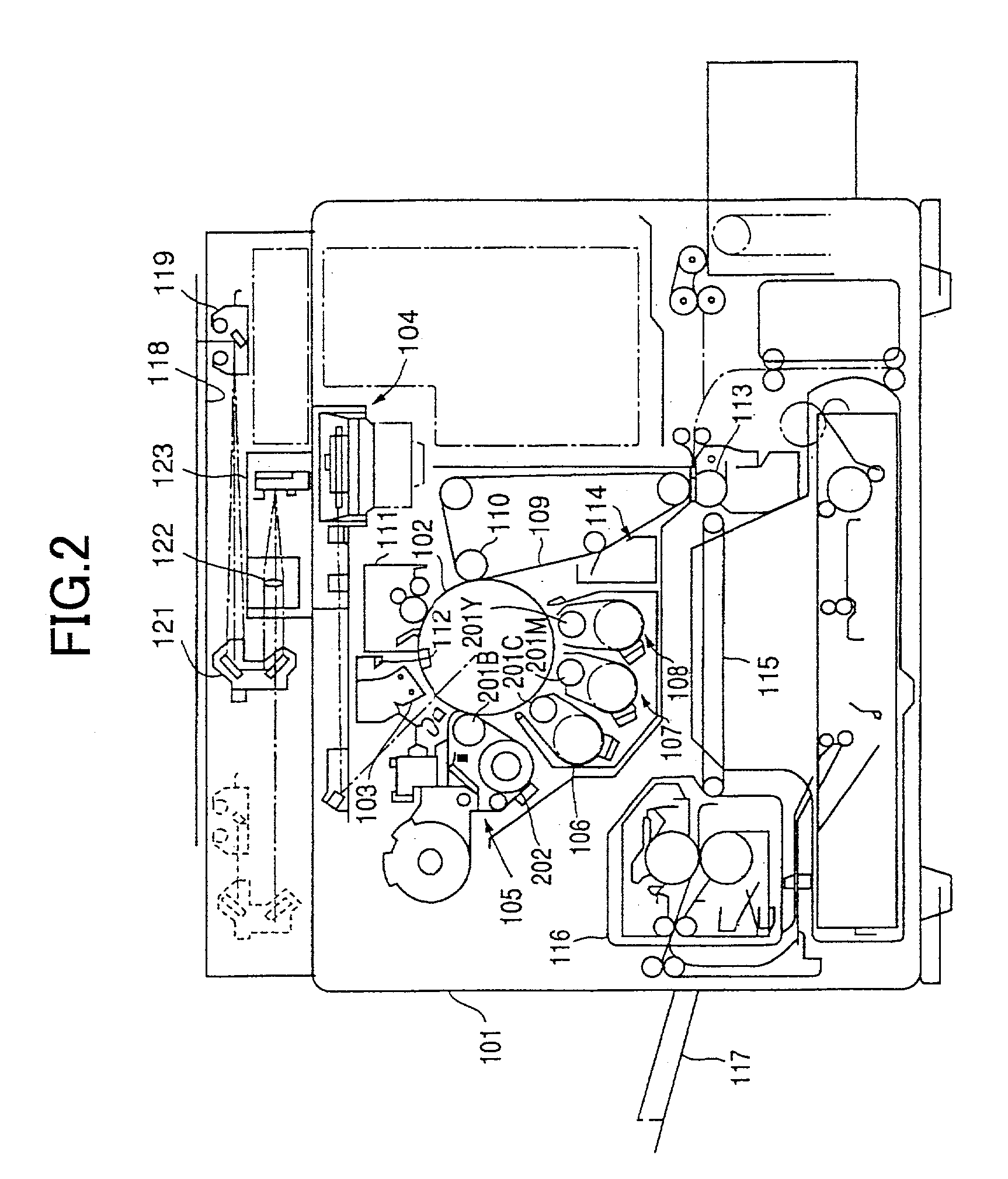Image forming apparatus and masking coefficient calculation method
a masking coefficient and image forming technology, applied in the field of image forming apparatus, can solve the problems of inability to calibrate, disabling faithful color, and inapplicability of chromatic color faithfulness technology
- Summary
- Abstract
- Description
- Claims
- Application Information
AI Technical Summary
Benefits of technology
Problems solved by technology
Method used
Image
Examples
first embodiment
[0060]First, the first embodiment of the present invention will be described. The first embodiment is a case when a color calibration technique of the present invention is applied to an electronic photocopying machine (hereinafter, simply called as a copying machine) which is an image forming apparatus.
[0061]Although this invention mainly relates to correction or calculation of a masking coefficient for color calibration process performed in an after-mentioned color calibration circuit, a configuration and the operation of the copying machine will be described first with reference to FIGS. 2–4, and the color calibration process will be described in detail after that.
[0062]FIG. 2 is a schematic view showing mechanical configuration of the main body of a copying machine 101. Outline of the mechanism of the main body of the copying machine 101 of the present invention will be described with reference to FIG. 2.
[0063]In FIG. 2, an organic photosensitive (OPC) drum 102 having a diameter ...
second embodiment
[0127]In the first embodiment, the difference value is added to every printer vectors when calculating the corrected masking coefficient as shown in equation (11). As indicated by the equations 8 and 9, color calibration can be performed effectively by this method.
[0128]However, since the printer vectors of the white and black points are used for calculation of masking coefficients for every divided color space, when different correction values are used for each space, there is a case that discontiguous spaces are generated around the boundary planes near the white and black points.
[0129]In addition, for a printer vector of another point of the boundary point, by using difference values corresponding to the point, discontinuity on each boundary plane can be prevented.
[0130]In the second embodiment, in consideration of these points, in the above example using R patch, the correction values (CD[R],MD[R],YD[R],KD[R]) and (CD[M], MD[M],YD[M],KD[M]) corresponding to printer vectors of R ...
third embodiment
[0132]In the first and second embodiments, the masking coefficient is calculated by using the difference values indicated by the equation (4). In the third embodiment, a method for calculating the masking coefficient without using the difference values.
[0133]In a case where the color space is divided by points red (R), yellow (Y), green (G), cyan (C), blue (B), magenta (M)in the same way as the above mentioned embodiments, the masking coefficient (before correction) of the hue between R and Y can be represented by an equation (13).
[0134](acracgacbacamramgambamayraygaybayakrakgakbak)=(C[R]C[Y]C[W]C[K]M[R]M[Y]M[W]M[K]Y[R]Y[Y]Y[W]Y[K]K[R]K[Y]K[W]K[K])×(R[R]R[Y]R[W]R[K]G[R]G[Y]G[W]G[K]B[R]B[Y]B[W]B[K]1111)-1(13)
[0135]For example, assuming that values obtained by reading the R patch by a scanner CCD having variation of spectral characteristics is (R′[R],G′[R],B′[R]), values calculated by the masking coefficient of the equation (13) can be represented by a foll...
PUM
| Property | Measurement | Unit |
|---|---|---|
| diameter | aaaaa | aaaaa |
| color | aaaaa | aaaaa |
| colors | aaaaa | aaaaa |
Abstract
Description
Claims
Application Information
 Login to View More
Login to View More - R&D
- Intellectual Property
- Life Sciences
- Materials
- Tech Scout
- Unparalleled Data Quality
- Higher Quality Content
- 60% Fewer Hallucinations
Browse by: Latest US Patents, China's latest patents, Technical Efficacy Thesaurus, Application Domain, Technology Topic, Popular Technical Reports.
© 2025 PatSnap. All rights reserved.Legal|Privacy policy|Modern Slavery Act Transparency Statement|Sitemap|About US| Contact US: help@patsnap.com



